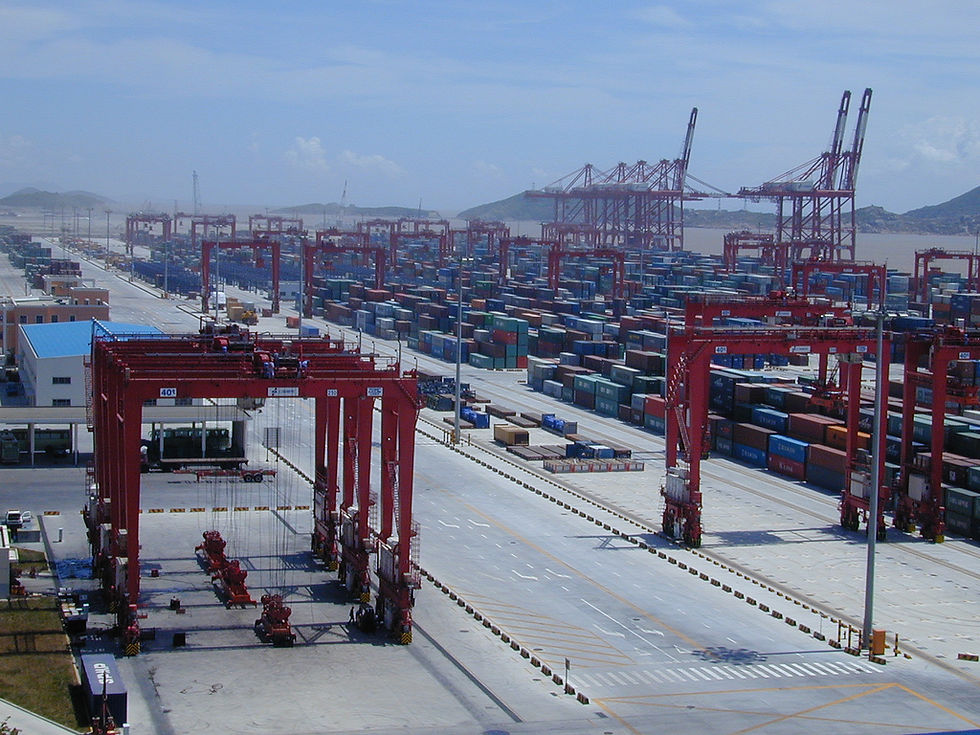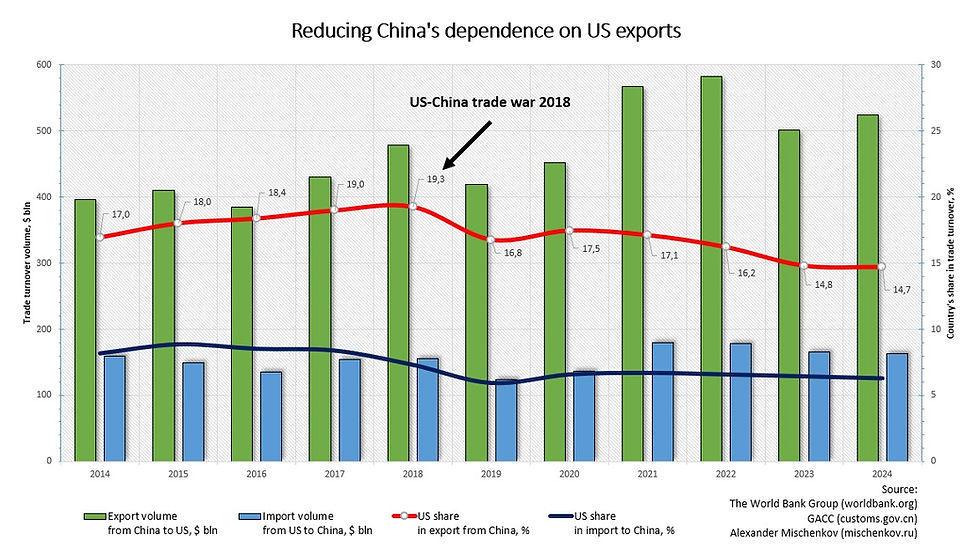CLM Insights Interview with Zongyuan Zoe Liu
- China Leadership Monitor
- Nov 30, 2023
- 7 min read
Zongyuan Zoe Liu. Sovereign Funds: How the Communist Party of China Finances Its Global Ambitions. Cambridge, MA: Belknap Press: An Imprint of Harvard University Press, June 2023.

Insights Interview
What were the initial motivations behind China’s decision to set up sovereign wealth funds? How have its objectives and tactics or tools changed over time?
Most Chinese sovereign funds were not established with explicit geo-economic motivations, nor were they initially created as platforms for global power projections. Crises at home and abroad have shaped and expedited the party-state’s policy changes from focusing on the accumulation of foreign exchange reserves to considering reserve diversification and investment in strategic assets.
Initially, the decision to use China’s FX reserves to create sovereign funds was motivated by domestic considerations rather than by an intention to weaponize China’s FX reserves. These domestic considerations include improving China’s financial security, securing strategic overseas assets, and ultimately supporting China’s development. For the last two decades, China’s sovereign funds have played a significant role in the Chinese economy, mitigating financial crises and tempering exogenous shocks. They have supported China’s industrial policies by financing the state’s procurement of strategic overseas assets, bankrolling Chinese enterprises’ mergers and acquisitions abroad, and sponsoring the development of indigenous Chinese technology startups. As China’s state-owned capital has gone global, the scope of China’s geo-economic influence has duly expanded.
What makes China’s sovereign wealth funds distinct from those in other countries? Can you explain the issue of leverage since you state that China’s sovereign wealth funds (SLFs) are actually sovereign-leveraged funds (SLFs)?
Unlike traditional commodity-based SWFs, China’s approaches to leveraging its FX reserves to create sovereign funds do not rely upon natural resource revenues. China’s experience with sovereign funds demonstrates that a state without significant natural resource revenues can take on explicit or implicit leverage to source the seed capital for the founding of what I call sovereign leveraged funds (SLFs). SLFs are a political-economic innovation because they are the product of the state leveraging its financial and political resources, explicitly or implicitly, to make it possible to capitalize a fund without relying upon a high-profit revenue stream such as commodities exports.
Explicit leverage means issuing debt and using the proceeds to capitalize SLFs. This process involves expanding the state’s balance sheet and allowing the government to raise new capital from designated institutions or private markets, to add it to the existing stock of available capital, and to deploy the combined lot via a SLF as investments in risky assets. How the debts are structured and raised, who provides the debt proceeds, and who controls the newly established funds are not only financial issues but also political issues. In other words, the decisions about how the newly issued debt will be underwritten and who will ultimately control the resultant SLF are the product of intensive political negotiation and aggressive bureaucratic competition. The creation of China Investment Corporation (CIC) illustrates the explicit use of leverage over China’s FX reserves. The Ministry of Finance (MoF) issued RMB1.55 trillion special purpose bonds and used the bond proceeds to purchase $200 billion FX reserves from the People’s Bank of China (PBoC) and then to capitalize CIC.
An alternative approach for the state to obtain investment capital is to use implicit leverage to convert existing pools of low-risk capital, or state-owned assets like FXreserves, into high-risk-bearing capital that is subsequently transferred to the management of the SLF. How this process constitutes an increase in the state’s financial leverage can be understood by considering the typical investment made by a SLF. In general, the fund uses its capital to make an equity investment in a target company that is itself internally leveraged—that is, it carries debt on its own balance sheet. The sovereign fund’s equity interest is subordinate to the debt of the target company. The state is implicitly leveraged because the debt of the company is not on the balance sheet of the state, but the state still bears the risk of losing its entire equity stake if the company’s debt cannot be repaid. In other words, the leverage is external to the state’s balance sheet. In this way, the state does not issue any new debt or expand its balance sheet, but it still increases its financial leverage. Both Central Huijin and SAFE-affiliated investment companies serve as examples of how the state takes on implicit leverage and then how political conflict ensues.
Economically, the use of either explicit or implicit leverage over FX reserves decreases the stock of FX assets that can be counted toward FX reserves as defined by the IMF. The most important distinction between the two approaches is the accounting treatment and awareness among the general public of its existence. Regardless of which type of leverage the state chooses when raising capital, the political outcome is the same: it will inevitably precipitate political conflict among those that aspire to control the resultant capital. Implicit leverage is usually a more politically expedient choice because the associated liabilities usually are not recorded in the official accounts.
Have you observed major differences in terms of the deployment of sovereign wealth funds between the Hu Jintao era and the Xi Jinping era, in particular with respect to risk-taking, strategic missions, and outcomes?
The ascendance of Xi Jinping to the party’s top leadership position in 2012 and the rollout of the Belt and Road Initiative (BRI) have motivated the party to leverage China’s FX reserves as strategic financial power to advance China’s overseas interests. Since2013, the party has used FX reserves to replenish China’s policy banks and to establish several new sovereign funds, such as the Silk Road Fund, China-Latin America Production Capacity Cooperation Investment Fund, China-Africa Industrial Capacity Cooperation Fund, and CNIC Corporation.
Under President Xi, the party-state has gradually expanded the SLF model, applying it to reform state-owned enterprises (SOEs) so as to update the state’s industrial policy. InNovember 2013, President Xi laid out his vision for China’s economy for the first time and called for creating “state-owned capital investment companies” to invest in “key industries and fields that are vital to national security and are the lifeline of the national economy.” In effect, Xi’s proposed state-owned capital investment companies are SLFs mandated to focus on financing development in state-prioritized strategic industries, such as civil aviation, energy and mineral resources, nuclear power, and global shipping and logistics.
Xi’s prioritization of capital management in China’s economic reform—and his use of SLFs as a tool to accomplish this—is not a complete departure from the path of his predecessors. Instead, it reflects the enduring influence on China’s economic policymaking of the dual successes of Central Huijin in stabilizing China’s financial system and CIC’s expansion into global financial markets. For Xi’s generation of Chinese Communist Party leadership, the SLFs model provides a ready playbook for expanding the influence of the party-State both at home and abroad.
You devote a lot of analysis to the bureaucratic competition for control of China’s sovereign wealth funds. This may come as a surprise to those who see China ruled by a regime where one party calls the shot. Can you explain which bureaucracies are the main players in the competition for control of sovereign wealth funds and how the party deals with such competition? How has the competition affected the deployment and returns of China’s sovereign wealth funds?
Take CIC as an example. The first generation of CIC board members were drawn from the bureaucracies that competed to shape China’s economic and financial policies, including the MoF, the National Council for Social Security Fund, the China Securities Regulatory Commission, the Ministry of Commerce, the PBoC, and the SAFE. None of them had extensive asset management expertise or experience. While this multiagency composition of CIC’s board can be interpreted as an intention to create an internal check-and-balance to avoid one government agency monopolizing control over CIC, the bureaucratic nature of the board composition, especially the lack of seasoned investment expertise, suggests that CIC’s corporate governance and investment decision-making process is likely to be less professional and more political than that of its global peers.
The fact that CIC’s board was composed of representatives from rival government agencies meant that the strategic decision-making of the board could resemble a political proxy battle between them. The dominance of MoF veterans at the vice-ministerial level and above over CIC’s board of directors suggests that voting at the board would most often favor maintaining the MoF’s influence rather than setting out an independent strategic vision for CIC.
CIC’s troubled debut in global markets in the running of the global financial crisisexacerbated an ongoing domestic power struggle between the MoF and the PBoC. Before CIC’s establishment, Central Huijin was under the control of the PBoC. CIC’s acquisition of Central Huijin in 2007 was a public political defeat for the PBoC because it lost control over the “shareholder-in-chief” of Chinese financial institutions. CIC’s initial capitalization using China’s FX reserves also publicly challenged the SAFE’s long-established role as the only legal administrator of China’s FX reserves. As the size of China’s FX reserves grew, the PBoC and SAFE responded to these challenges posed by CIC. The SAFE has moved beyond its traditional conservative reserve management approach and has adopted unconventional and aggressive diversification strategies, deploying China’s FX reserves to finance realization of the party’s ambitions in global markets.
Notwithstanding the rivalry between the two institutions, both CIC and the SAFE have consistently been led by men who share an intense loyalty and close connections to the highest ranks of China’s Communist Party. The party closely guards the path to the top positions inside China’s SLFs. Although CIC and the SAFE have expanded their recruiting to become more professional and international, their senior positions havealways been occupied by party loyalists with decades of experience as political mandarins. For these men, Chinese politics is never far from the mind. Whether at CIC or the SAFE, no matter where they go, they are al party men.
China set up its sovereign wealth funds in an entirely different geopolitical environment. As the world moves toward economic fragmentation and great power rivalry, what kind of changes do you see as likely in the deployment of China’s sovereign wealth funds?
China’s sovereign funds have evolved and changed their strategies in response to increasingly stringent FDI screening by Western governments. Since 2017, CIC and other Chinese sovereign funds have entered into more partnerships with leading institutional investors in Western countries and have launched several bilateral cooperation investment funds. They have become innovative in establishing partnerships and structuring deals in ways that are more likely to pass regulatory scrutiny so as to invest in strategic assets that would be nearly impossible to obtain.










